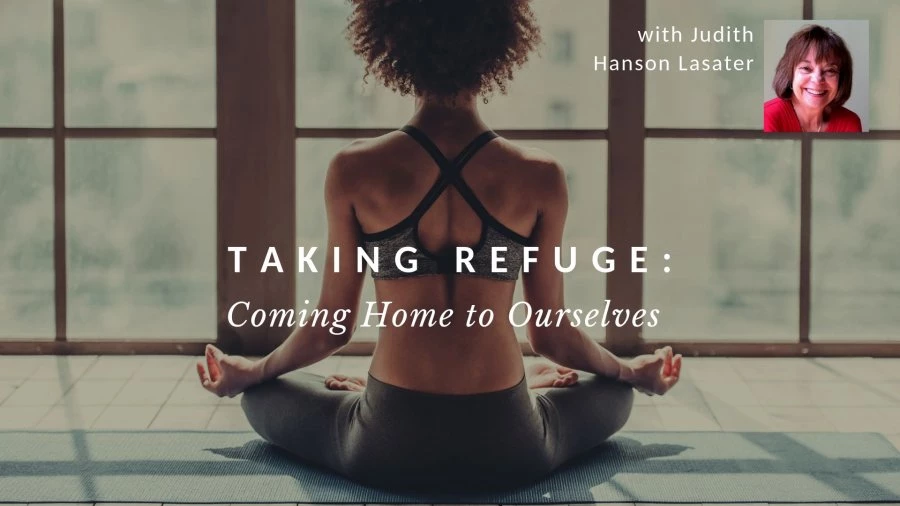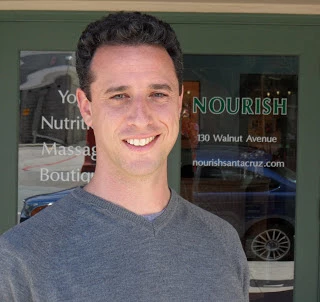Low Pressure Tactics: Using Yoga to Lower Blood Pressure

My father has high blood pressure. His parents had high blood pressure. My mother has high blood pressure, and her parents had high blood pressure. So, it came as no surprise when, in a 2010 annual checkup, I had blood pressure readings of as high as 140/95. Instead of immediately prescribing medication, mostly because I had no other major risk factors, my doctor suggested that I purchase a home blood pressure monitor and take my blood pressure in a particular way and regularly. I did this earnestly.
While I am confident that the doctor’s recommendation aimed at gathering data, it turned out to be a prescription for awareness, regularly taking my blood pressure made me more aware of this phenomenon, which, in my case, led to some more mindful choices.
I was already a runner, yoga practitioner, and vegan. I’ve been running since I was a teenager, doing yoga since college, and eating vegan since 1995, all studied interventions for blood pressure reduction. But just doing these things, in general, was not enough to impede the encroaching family-induced high blood pressure. What more could I do lifestyle-wise?
First, I scheduled a consult with a registered dietitian. She had me do another data collection/awareness exercise, a 72-hour food diary with exact descriptions of each food, and each meal. I completed this in great detail. While she did give me some concrete ways to change the way that I eat, the exercise itself, taking 72 hours to mindfully observe—without judging or changing anything in those 72 hours—everything I was eating and drinking, had a profound effect on my awareness of what I was consuming. (See the list at the end of other non-yoga but important lifestyle changes made.)
Committing to Daily Yoga Practice 
Like the changes I made to my running routine, I made similar changes to my yoga practice. While I have had a practice for some time, there was a period when it was more haphazard and less consistent. Once I got the blood pressure warning, I started scheduling a more regular yoga practice.
I have said for a long time that 80 percent of the benefit of doing yoga comes from just doing yoga. You can adjust the intensity and duration to tweak the other 20 percent of the benefit. Philosophers, sages, thinkers, and people of good common sense have had it right: “The perfect is the enemy of the good.” So, I set a routine to do a little bit of yoga five days per week.
The standard I started with centered around my family responsibilities. At that time, I needed to start prepping breakfast and lunches at 7:30 am. So I decided that my practice would start at whatever time it could and always end at 7:30. Some mornings I would get up and start practicing by 6:30, but most mornings, I would begin to around 7:05. Sometimes I wouldn’t be able to start until 7:26, and I would contemplate just scrapping it altogether, but then I realized that the routine mattered more than the duration. So I would practice for three or four minutes and then end at 7:30.
Other times when I did end up scrapping the practice altogether, I would be more irritable, moody, stressed, and inevitably my blood pressure readings would be elevated. In other words, even just three or four minutes made a dramatic impact on lowering my blood pressure! Don’t get me wrong; I am not starting a new fad “3-Minute Yoga!” There are times when a longer practice really helps and makes a more significant difference. I’m merely suggesting that an all-or-nothing attitude is ultimately destructive.
Choose Your Poses 
Having said that, I did make some changes to the type of postures I practice to impact my blood pressure positively. For example, I started prioritizing the inclusion of more inverted postures, including Sirsasana I and II (Headstand Pose I and II), Adho Mukha Vrksasana (Handstand Pose), Pinca Mayurasana (Forearm Stand Pose), and Sarvangasana (Shoulderstand Pose) (pictured with blankets right).
People with excessively high blood pressure above 145/95 should avoid fully inverted postures. When one first goes upside down, cerebral blood pressure increases. This increases the risk of stroke for those who already have extremely high blood pressure. However, after a few moments upside down, the body readjusts to the new circumstance, and blood pressure lowers. This lowering effect is magnified as inverted postures are practiced longitudinally (over time).
While there is complex physiology as to why this happens, including baroreceptors and the autonomic nervous system, the main point is that by practicing inverted postures, I was retraining my body to lower its blood pressure. I also included some specific forward bends to have a similar blood pressure positive effect.
 If your blood pressure is not regulated, and especially if you don’t already practice inversions regularly, it’s important to take the process of practicing inversions slowly. Wear a blood pressure monitor so that you can check how your pose choices affect your blood pressure.
If your blood pressure is not regulated, and especially if you don’t already practice inversions regularly, it’s important to take the process of practicing inversions slowly. Wear a blood pressure monitor so that you can check how your pose choices affect your blood pressure.
For example, you can start weaving inversions into your practice by lying on the floor and resting your legs on the chair. If you find, over time, that this pose is lowering your blood pressure, you can move to Viparita Karani (Legs Up the Wall) (pictured above). Practice this pose until you find that it’s resulting in lower blood pressure. Then move to Sarvangasana. Find an experienced yoga teacher who’s well-versed in these inversions to ensure that you are practicing them with healthy alignment and proper support.
Make Pranayama and Meditation Part of Your Blood-Pressure Practice 
Additionally, and perhaps most importantly, I made adjustments to my practices of breathing (pranayama) (pictured right) and meditation, like including them. While in the past sitting in meditation was an afterthought, I began front-loading a sitting practice before moving through yoga postures (asana).
Meditation can be just an important tool as physical exercise when reducing blood pressure. Sometimes I would sit with my sphygmomanometer (blood pressure monitor) going and experiment with different ways of breathing to observe which breathing practices best lowered my blood pressure. For example, longer inhalation as compared to exhalation increased my blood pressure, and longer exhalation as compared to inhalation decreased my blood pressure.
As a result of these self-experiments, I started engaging a breathing pattern of elongating the exhalation with the relationship to the inhalation. I also experimented with different meditation foci. While many topics of meditation/contemplation had a positive effect on lowering my blood pressure, some that seemed to lower it most consistently include thinking of my loved ones and how I love them, broadening my view of nature and the natural world, and whatever makes me smile.
More Ways to Regulate Blood Pressure 
Today, as I write this, my blood pressure reading is 113/74. I hope that my personal example of change and self-determination will be of support and inspiration to those of you who are engaged in similar struggles. You can make change, significant change, without tremendous shifts in your life. Laugh. Meditate. Breathe. Do some yoga (any yoga). Get outside. Think about what you are eating before, during, and after you eat it. Make commitments. Be consistent. Be dedicated. Be mindfully aware.
Here are some equally important non-yoga changes I made: reduced sodium intake dramatically, changed my running routine, and was much more diligent about doing it regularly, no matter what, and added regular acupuncture and massage each month.
Study with YogaUOnline and renowned yoga teacher and writer, Judith Hanson Lasater – Taking Refuge: Coming Home to Ourselves.

Reprinted with permission from Yoga for Healthy Aging.

Victor Dubin, ERYT-500, has been teaching yoga full-time in Santa Cruz, CA, since 1996. He is co-founder and owner of NOURISH, a wellness center in Santa Cruz that offers yoga classes, nutrition consultations, and massage. In addition to his full schedule of regular classes, Victor also leads both a 200 and 500-hour yoga teacher training program. For more information, go to nourishsantacruz.com.




